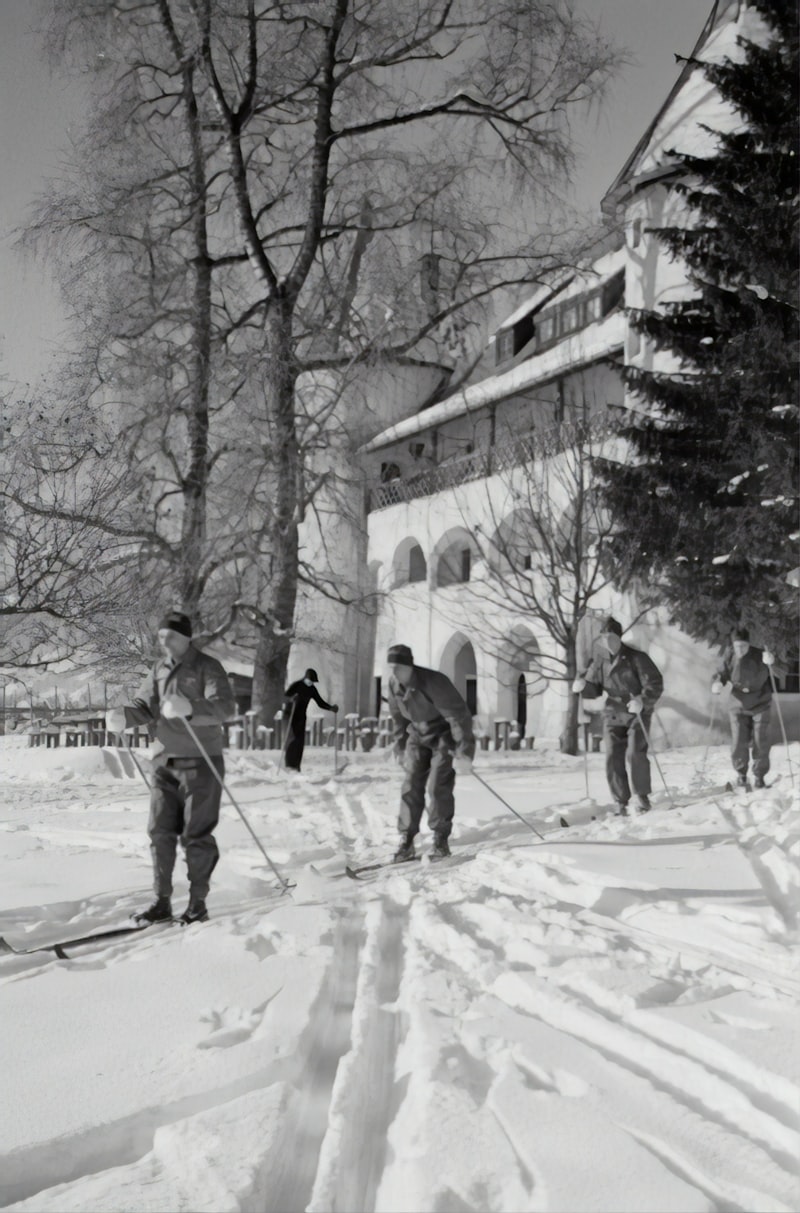
Throughout human history, certain enigmas have perplexed and fascinated generations. These mysteries, shrouded in intrigue and speculation, continue to capture our imagination, prompting endless quests for answers. From ancient civilizations to modern-day puzzles, each mystery offers a glimpse into the unknown, challenging our understanding of the world.
One of the most enduring mysteries surrounds the construction of the Egyptian pyramids. Built over 4,000 years ago, these colossal structures defy explanation with their precision engineering and sheer scale. How did the ancient Egyptians achieve such architectural mastery without modern technology? Theories range from intricate ramp systems to extraterrestrial intervention, yet the true methods remain cloaked in mystery.
Moving to more recent times, the disappearance of Amelia Earhart in 1937 remains a poignant mystery in aviation history. The pioneering pilot vanished over the Pacific Ocean during her daring attempt to circumnavigate the globe. Despite extensive search efforts, no conclusive evidence has ever been found, leaving her fate and the circumstances of her disappearance open to speculation and conspiracy theories.
Delving deeper into antiquity, the legend of Atlantis continues to intrigue scholars and adventurers alike. Described by Plato as an advanced civilization lost beneath the waves, Atlantis has sparked countless expeditions and theories about its possible location and existence. Was it a mythological tale or a real place that met a catastrophic end?

Closer to home, the Voynich manuscript represents one of the most cryptic puzzles in the history of literature. Written in an unknown script and adorned with mysterious illustrations, this medieval manuscript has confounded linguists and codebreakers for centuries. Its content, purpose, and even its origin remain subjects of intense debate and speculation.
The Enigma of the Lost City of Atlantis: Myth or Reality?

Plato’s accounts of Atlantis depict it as an advanced society, boasting grand architecture and a flourishing culture that rivaled even the great civilizations of its time. According to his dialogues, Atlantis was a naval power that sought to conquer lands both within and beyond the Pillars of Hercules, modern-day Strait of Gibraltar. Its sudden and catastrophic demise, he claimed, was brought about by divine punishment, sinking into the ocean “in a single day and night of misfortune.”
While many dismiss Atlantis as purely allegorical, others are adamant that it was a real place, pointing to various archaeological and geological findings as potential evidence. Theories abound regarding its possible locations, ranging from the Azores Islands to the Caribbean and even Antarctica. Some speculate that Atlantis was a hub of ancient knowledge, perhaps even the source of early human civilization’s advancements.
Yet, despite numerous expeditions and theories, conclusive evidence of Atlantis’s existence remains elusive. Critics argue that Plato’s narrative was meant to illustrate moral lessons rather than recount historical events. They posit that the story of Atlantis serves as a cautionary tale, warning against hubris and the consequences of overreaching ambition.
In the realm of popular culture, Atlantis continues to capture imaginations, appearing in literature, films, and even video games. Its allure persists, compelling adventurers and historians alike to search for tangible proof beneath the waves or hidden in remote corners of the globe.
Whether Atlantis was a real city lost to the depths of the sea or a philosophical construct, its legacy endures as a testament to humanity’s enduring fascination with the unknown and the quest for understanding our origins and the mysteries of the past.
Decoding the Secrets of Stonehenge: Ancient Astronomical Observatory?
Imagine standing amidst the towering stones, pondering their precise alignment with celestial bodies. Researchers believe Stonehenge’s layout wasn’t arbitrary; rather, it seems designed to track the movements of the sun and moon. During the summer solstice, the longest day of the year, the sun rises exactly above the Heel Stone, framing an awe-inspiring spectacle.
But Stonehenge’s astronomical connections don’t end there. Some theories suggest it also served as a lunar calendar, marking significant lunar events with astounding accuracy. The alignment of certain stones corresponds with the moon’s cycles, hinting at a sophisticated understanding of celestial mechanics by its builders.

Moreover, recent discoveries through ground-penetrating radar and excavation have unveiled more mysteries. Beneath the earth surrounding Stonehenge lie buried monuments, possibly connected to rituals or ceremonies, adding layers to its mystique.
Beyond its scientific function, Stonehenge remains a symbol of human ingenuity and perseverance. Constructed using rudimentary tools and incredible labor, it stands as a testament to ancient civilizations’ capability and cultural richness.
Visiting Stonehenge today offers a glimpse into our distant past and invites reflection on its purpose and legacy. Whether it was a place of worship, a burial ground, or an astronomical observatory—or perhaps all three—Stonehenge continues to captivate and inspire, drawing visitors from around the globe to marvel at its enduring mysteries.
The Unsolved Puzzle of the Voynich Manuscript: Cryptography or Hoax?
The Voynich Manuscript is a 15th-century book named after Wilfrid Voynich, who discovered it in 1912. What makes this manuscript so intriguing is its mysterious content. The text, written in an unknown script, has defied all attempts at deciphering. Cryptographers, linguists, and historians have scratched their heads over its pages, trying to unlock its secrets.
Some believe the manuscript holds the key to lost knowledge or ancient herbal remedies, while others think it could be an elaborate hoax. The illustrations inside are equally baffling, depicting plants that don’t exist, star charts that defy known astronomy, and bathing nymphs in mysterious pools.
One theory suggests the manuscript is written in a complex code or cipher, designed to conceal its true meaning. Could it be a secret language known only to a few? Or perhaps it’s a cleverly constructed hoax, designed to deceive and mystify.
Imagine the thrill of uncovering a code that has stumped even the brightest minds throughout history. It’s like trying to solve a Rubik’s Cube with no colors or patterns to guide you. Every attempt to crack the code brings us closer to unraveling one of history’s greatest enigmas.
The Voynich Manuscript continues to fascinate and frustrate researchers today. Its pages remain an unsolved puzzle, waiting for someone to uncover its secrets. Until then, it stands as a testament to the enduring power of mystery and the human desire to unravel the unknown.
Amelia Earhart: The Enduring Mystery of the Lost Aviator
Amelia Earhart, a name synonymous with courage and adventure, continues to captivate the imagination of people around the world decades after her disappearance. Her story is not just one of pioneering aviation but also of enduring mystery and unanswered questions.
Amelia Earhart’s journey into the annals of aviation history began with her groundbreaking solo flight across the Atlantic Ocean in 1932, making her the first woman to achieve such a feat. This remarkable accomplishment catapulted her into international fame and solidified her status as an aviation icon. Her fearless spirit and determination inspired countless individuals, especially women, to pursue their dreams against all odds.
However, it was Earhart’s ill-fated attempt to circumnavigate the globe in 1937 that etched her name into the realm of enigma. During the final leg of her journey, Earhart and her navigator, Fred Noonan, vanished somewhere over the Pacific Ocean. Despite extensive search efforts and numerous theories over the years, the fate of Earhart and Noonan remains shrouded in mystery.
Theories abound regarding what happened to Amelia Earhart. Some speculate that their plane ran out of fuel and crashed into the ocean, while others suggest they may have landed on a remote island and perished there. The lack of concrete evidence has fueled conspiracy theories ranging from espionage to capture by the Japanese military.
The enduring mystery of Amelia Earhart’s disappearance continues to intrigue historians, aviation enthusiasts, and the public alike. It represents a poignant reminder of both the dangers faced by early aviators and the enduring human fascination with the unknown. Despite the passage of time, the quest for answers surrounding Amelia Earhart’s final flight persists, ensuring that her legacy as a trailblazer and a symbol of courage will endure for generations to come.
Frequently Asked Questions
What role do archaeology and technology play in solving historical mysteries?
Discover how archaeology and technology combine to unravel historical mysteries. Learn how advanced tools like remote sensing and DNA analysis aid in uncovering ancient secrets, offering new insights into civilizations and events of the past.
Why are certain historical enigmas still debated among experts?
Discover why certain historical enigmas continue to spark debate among experts. This concise FAQ explores the complexities and varying interpretations that lead to ongoing discussions in the field of history, highlighting the challenges in interpreting incomplete evidence and the evolving perspectives that shape scholarly discourse.
What are some of the most famous unsolved mysteries in history?
Explore intriguing historical enigmas with our guide to some of the world’s most renowned unsolved mysteries. From the disappearance of Amelia Earhart to the enigmatic construction of the Great Pyramids, delve into these captivating puzzles that continue to baffle historians and enthusiasts alike.
How do historians and researchers approach unraveling ancient mysteries?
Learn how historians and researchers use archaeological evidence, ancient texts, and scientific methods to decode ancient mysteries, uncovering insights into past civilizations.
Can new discoveries and evidence change our understanding of historical mysteries?
Discoveries and new evidence have the potential to alter our understanding of historical mysteries significantly. These findings can provide fresh insights, challenge existing theories, and offer new perspectives on events or civilizations from the past.



